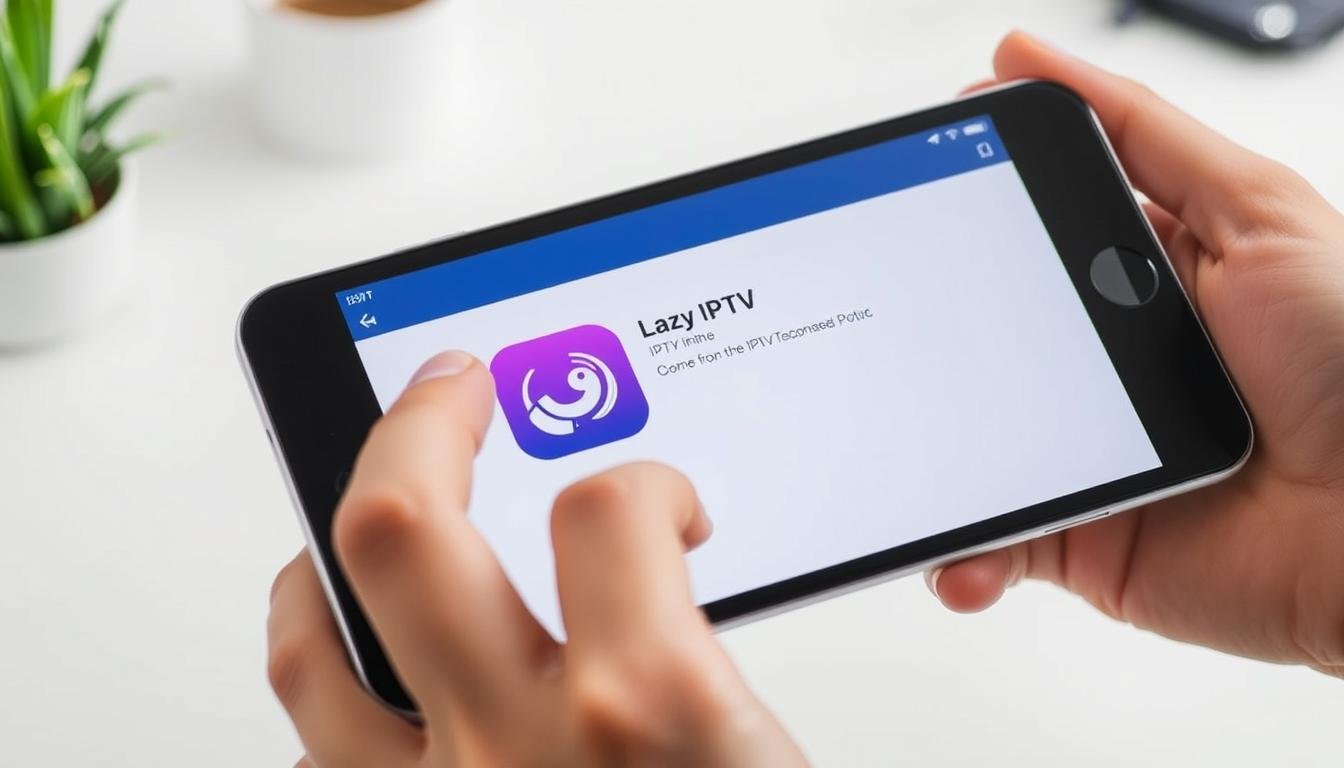SS IPTV is a free player that relies on user playlists rather than built-in channels. It runs officially on some Smart TV stores like the LG Content Store and select Samsung markets, but there is no official iOS app.
This introduction explains practical ways Canadians can get similar functionality on an iPhone or iPad today. You can use the web portal, browser playback, AirPlay mirroring to Apple TV, or an iOS-compatible player that accepts M3U/XSPF lists.
Expect clear steps for remote playlist upload, parental PIN protection, custom logos, and multi-playlist management. We also cover privacy, legality, and performance tips relevant in Canada so you get reliable streaming without risky sideloading.
Key Takeaways
- You can access SS IPTV features via the web portal or AirPlay, even without an official app.
- The app is legal; content legality depends on playlist sources.
- Prepare stable internet, valid playlist links, and AirPlay-ready hardware for best results.
- Smart TV versions (LG, Samsung) offer a more direct route for home setups.
- Use parental PINs, custom logos, and organized playlists for a tidy viewing experience.
What SS IPTV is and what iOS users can and cannot do right now
A lean player built for living-room devices makes SS IPTV popular. It focuses on user playlists instead of bundled channels. That design keeps the interface fast and simple for smart tvs and Android boxes.
Key strengths include multi-playlist support, parental PINs, custom logos and a web portal for remote uploads. The LG Content Store and some other TV stores list the app, which simplifies setup on supported hardware.

Why it’s popular on TVs and Android
The player is quick, predictable, and free. Users like that they can manage lists remotely and keep many playlists organised. That appeals to both casual viewers and power users who want tidy channel lineups.
Current availability in Canada
There is no official iptv listing in the Canadian app store for this title. If you need an available app experience, use the web portal, AirPlay mirroring, or an iOS‑compatible third‑party player that accepts M3U/XSPF playlists.
- Notes: The tool itself does not host content; legal responsibility rests with your playlist sources.
How to install SS IPTV on ios/iPhone/ iPad
Quick reality check: there is no official app in the Canadian App Store, so you must use practical workarounds that deliver similar results.
Quick reality check: official app vs. viable workarounds
You cannot perform a direct installation on an ios device here. The realistic options are browser access via the web portal, AirPlay screen mirroring to Apple TV, or a reputable third‑party player that accepts M3U/XSPF playlists.
“Use the web portal for remote playlist management, mirror the screen for big‑screen viewing, or import playlists into a native app for a more familiar interface.”

Prerequisites: stable internet, playlists, and AirPlay-ready devices
Before you start, gather working playlist URLs or files and confirm AirPlay is enabled on your Apple TV. Keep the ios device and TV on the same Wi‑Fi network for smooth mirroring.
Bandwidth matters: aim for 20 Mbps or higher for reliable HD playback and avoid congested Wi‑Fi bands to reduce buffering.
- Open the web portal in Safari and pair with an on‑screen code for remote playlist uploads.
- Or import M3U/XSPF into a trusted app, then mirror or cast as needed for a TV view.
- Follow steps carefully for playlist URLs and EPG so channels load correctly.
Method A: Use the SS IPTV web experience on iPhone or iPad
Quick access starts in your mobile browser. Open the official web portal in Safari, then enter the on-screen connection code displayed on the target screen. This pairs your session and enables remote playlist uploads without a native app.
Open the official web portal and sign in with on‑screen code
Pairing is simple: visit the portal, input the code from the TV or app instance, and grant access. Once paired, you can add M3U or XSPF playlist URLs or upload files from cloud storage.
Test playlists in the browser before pushing to other devices
Use the browser player to stream a few channels first. This confirms that your sources are live and helps you spot dead links.
“Test streams in the browser to confirm content quality before syncing with larger screens.”
- Pair via the on‑screen connection code shown on the display.
- Upload or paste M3U/XSPF playlist links and configure logos, categories, and EPG.
- Stream test channels in Safari; remove dead links and duplicates for best performance.
- Sign out when finished and re‑pair later to update playlists safely.
| Action | Why it matters | Tip |
|---|---|---|
| Pair session | Allows remote edits from the browser | Keep the code visible on the display while pairing |
| Upload playlist | Centralizes channels and logos | Use M3U/XSPF files or URLs hosted on reliable sources |
| Test streams | Validates content before sharing | Check a few channels in HD to confirm bandwidth |
Method B: Screen mirror to Apple TV with AirPlay
Mirror your device to Apple TV for a simple, full‑screen viewing option. This method uses the browser player on your mobile and sends the display to the television without extra apps or downloads.
Enable AirPlay in Settings and confirm the network
On Apple TV, open Settings and enable AirPlay (or AirPlay and HomeKit). Ensure both devices share the same Wi‑Fi network for reliable access.
For step‑by‑step guidance, visit enable AirPlay from Settings.
Start Screen Mirroring from Control Centre
On your device, open Control Centre and tap Screen Mirroring. Choose your Apple TV from the list of available devices and wait for the connection to form.
Tip: Start mirroring from the home screen before launching the browser so the session stays active.
Launch the web portal and stream to your TV
With mirroring active, open Safari, visit the SS IPTV web portal, and load your playlist. The TV will mirror whatever appears on your device’s screen.
“Begin mirroring from the home screen, then open the portal. This reduces interruptions during playback.”
- If you see lag, close background apps and switch to a 5 GHz Wi‑Fi band.
- Sit closer to your router or use Ethernet for the Apple TV when possible.
- For alternatives and related setup tips, see this Android guide: alternative app guide.
Method C: Use iOS-compatible IPTV player apps as alternatives
If the native title isn’t available in the app store, choose an iOS‑compatible player that accepts M3U and XSPF. These players reproduce many SS IPTV features, like multiple lists, EPG mapping, and logo support.
Pick apps that disclose playlist upload support and privacy practices clearly. Read recent ratings and descriptions in the available app store before you install app choices.
Choose a player that supports M3U/XSPF uploads
Look for a player that lists M3U/XSPF, EPG import and logo mapping in its feature list. Prioritise apps with multi‑list support so you can switch providers without rebuilding lineups.
Import, map EPG and add logos
After you add a playlist URL or file, map EPG sources and attach channel logos for a tidy guide. Test several channels first to confirm stream stability and correct guide data.
- Verify privacy: avoid apps that request unnecessary permissions or lack a clear privacy policy.
- Check stability: recent reviews reveal playback reliability and background behaviour.
- Find iptv quickly by searching terms like “M3U IPTV player” in the app store.
For a compatible option, consider the UHF listing in the App Store: UHF — Love Your IPTV. Keep your ios device updated and limit app permissions for best privacy and performance.
Set up and manage playlists the SS IPTV way
Managing playlists well keeps viewing tidy and fast across devices. Start by pairing a display instance with the web portal. The portal’s on‑screen connection code opens editor access so you can add lists and tweak settings remotely.
Generate and enter the connection code in the web portal
On a TV or supported device, open the player and generate the connection code. Visit the portal from a browser and enter that code to gain secure access to your playlist editor.
Add multiple playlists, categories, and parental controls
Upload M3U or XSPF files and assign categories so channels appear in logical groups. Attach EPG sources and custom logos for a clean guide view.
- Upload multiple playlists and map EPG for accurate programme names.
- Use parental PINs to restrict adult content on shared household devices.
- Organize channels into categories for faster browsing on smaller screens.
Keep links fresh and curated for performance
Curate your sources regularly. Dead links slow navigation and cause buffering.
Follow on-screen instructions within the portal to save edits, then reload your devices so updated channels appear immediately. Keep backups of primary playlist URLs to restore service if a provider changes endpoints.
Important notes for Canadians: legality, privacy, and performance
Legal and practical risks often come from the streams you choose, not from the player itself. The player acts as a neutral tool. That means you must check the provenance of each content source before you use it.
Player vs. content: understanding legal boundaries
Using a playlist player in Canada is lawful. The legality depends on whether the streams are licensed. Stick to free‑to‑air channels or licensed services where possible.
- Avoid paid bundles marketed in an app store as “official iptv” when they claim guaranteed channels.
- Keep receipts or account details for any paid subscriptions you use as proof of rights.
Privacy best practices and ISP considerations
Limit personal data you give third‑party apps and review privacy policies before granting permissions. Consider a reputable VPN if you want extra privacy and to reduce ISP throttling.
“A VPN can help reduce profiling and occasional throttling, but pick a trusted provider and check local rules.”
Connection tips to reduce buffering on mobile and home Wi‑Fi
Aim for a stable 20 Mbps+ connection for HD viewing. Use the 5 GHz Wi‑Fi band and keep your router firmware updated.
Keep playlists curated and avoid very large lists on devices and tvs; smaller, focused lists load faster and cut lag.
| Area | Action | Benefit |
|---|---|---|
| Legality | Use licensed sources and keep receipts | Reduces copyright risk |
| Privacy | Limit app permissions; consider VPN | Less profiling and fewer ISP slowdowns |
| Performance | 5 GHz Wi‑Fi; curate playlists; 20 Mbps+ | Smoother playback, less buffering |
Conclusion
Wrapping up, you can recreate the familiar playlist workflow across devices using a browser web portal, AirPlay mirroring, or a trusted iOS‑compatible player that accepts M3U/XSPF files.
Keep playlists tidy and check sources before adding them. Curated lists load faster on the home screen and reduce buffering on smart tvs and mobile devices.
Respect licensing and privacy. Use verified sources, limit permissions for third‑party apps, and adjust settings for better performance on your home network.
With these methods you get reliable channel access without an available app in the Canadian app store, while keeping control of files, devices and playback across your TVs and boxes.



